An easy, gluten free vegan French bread recipe using the water from chickpea cans (aquafaba) as egg replacers. Crusty on the outside and soft in the middle!
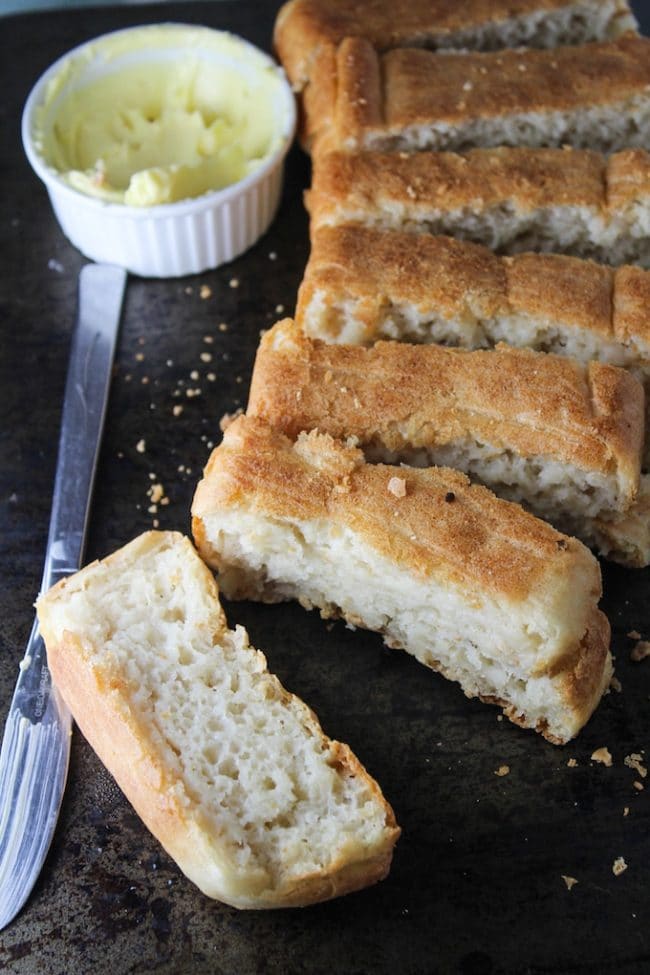
I’m pretty excited about this post today because it’s been a long time coming!
Easily my most popular recipe that I’ve ever shared on A Saucy Kitchen has been for my gluten free French bread recipe. It’s easy, it doesn’t require 50 different types of obscure gluten free flours, and above all it’s just really good!
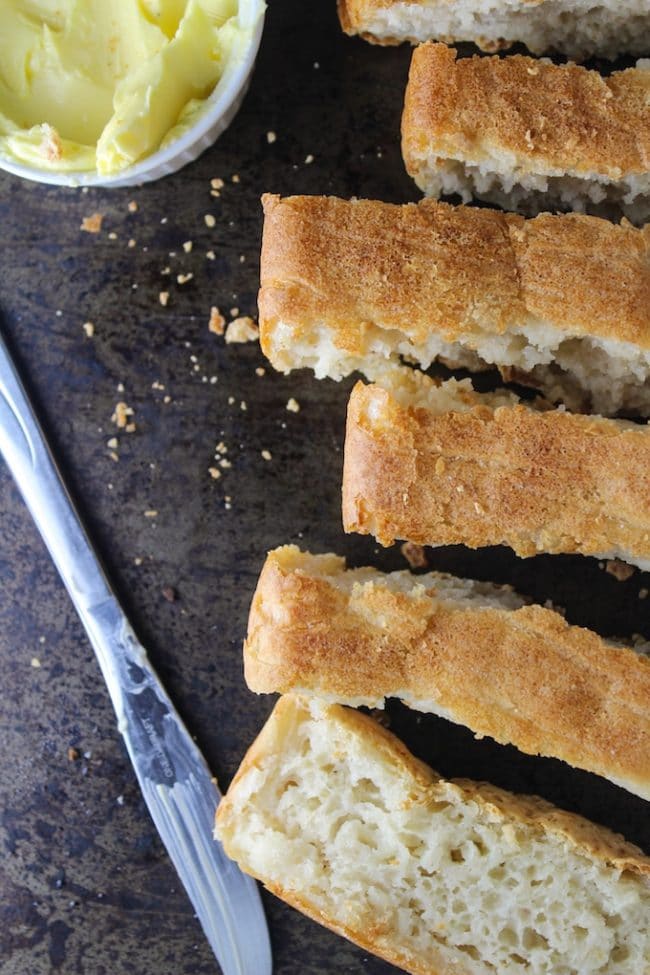
What is Aquafaba?
Aquafaba literally means bean water – as in the water that you and I used to pour down the sink when draining a can of chickpeas. As it turns out, this weird bean liquid makes for a fantastic vegan egg substitute.
As a rule of thumb 3 tablespoons of aquafaba is equal to 1 whole egg. However, this can depend on what you’re cooking and the consistency of the water. Ideally you want the water to be thick and a bit slimy – basically like real egg whites. Since the original recipe calls for egg white specifically this is perfect for our recipe!
Gluten Free Vegan French Bread
Just like the original Gluten Free Bread recipe the dough will look pretty wet and unusual compared to regular gluten filled doughs. You will have to spoon the dough into your bread pans so don’t be alarmed that you did something wrong.
Make sure that your yeast is still good before adding it to the dough. If the sugar-water and yeast mixture doesn’t foam that means that either your water wasn’t warm enough or the yeast is off. Best practice for storing yeast is to keep it in a cool, dark place like the fridge.
This bread is best on the first day, but you can keep it 2-3 days covered.
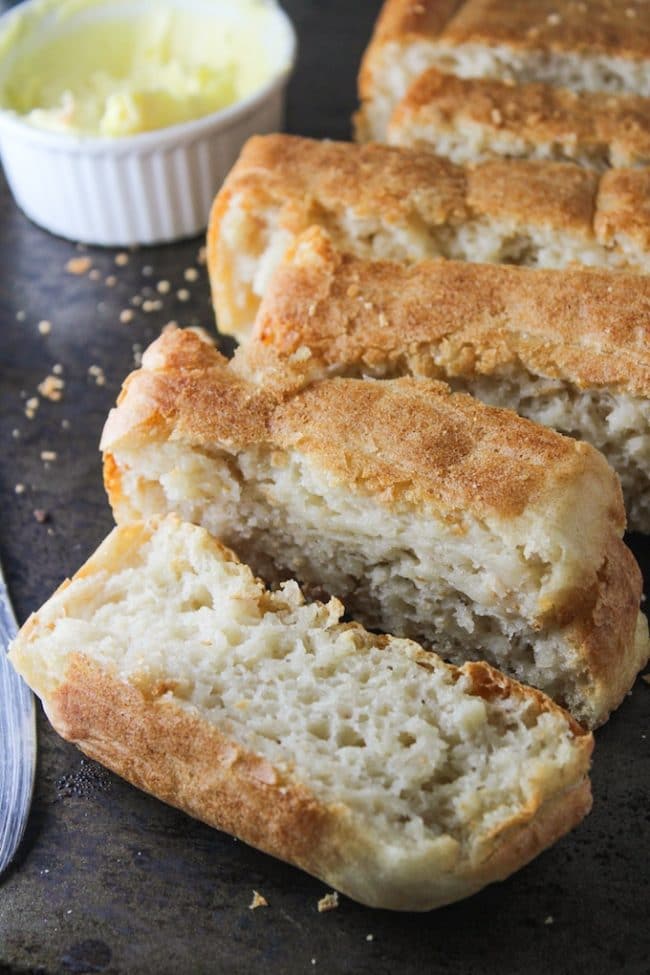
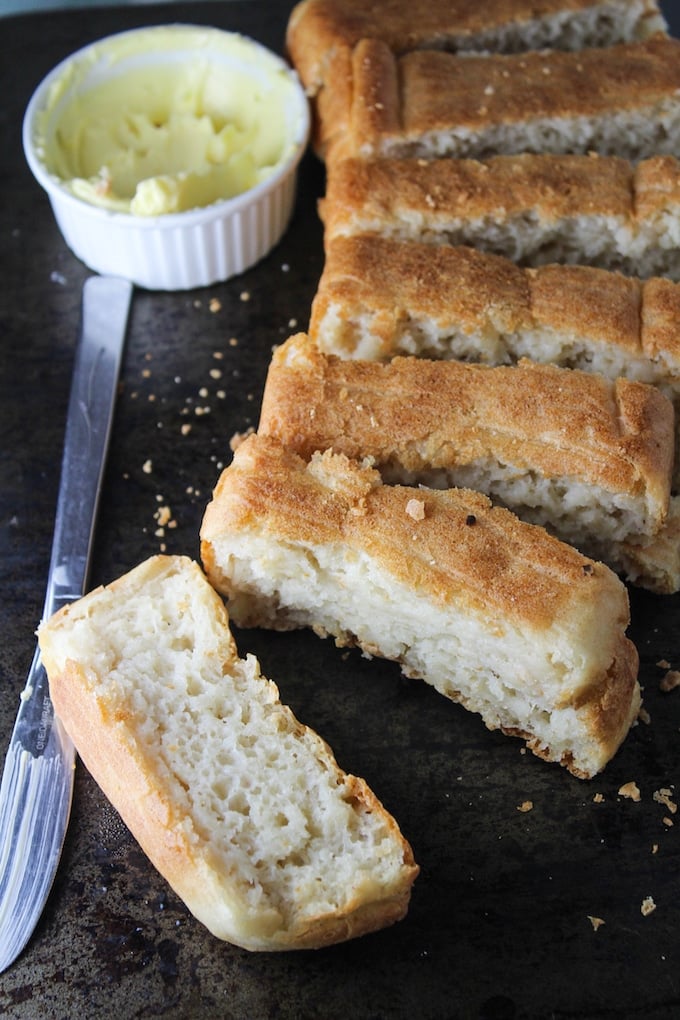
Gluten Free Vegan French Bread
An easy, gluten free vegan French bread recipe using the water from chickpea cans as egg replacers. Crusty on the outside and soft in the middle!
Ingredients
- 2 cups | 320 grams rice flour*
- 1 cup | 110 grams tapioca flour
- 1 tablespoon psyllium husk or xanthan gum
- 1 teaspoon salt
- 11/2 cup |360 ml lukewarm water between 105-110 degrees F
- 2 tablespoons quick rise yeast
- 2 tablespoons sugar or any kind
- 2 tablespoons | 30 ml olive oil
- 5 tablespoons | 75 ml aquafaba
- 1 teaspoon | 5 ml apple cider vinegar (you can substitute for another vinegar if you don't have ACV
Instructions
- In a large bowl, stir together your flours, psyllium husk, and salt.
- In a small bowl mix your hot water and sugar together and stir until the sugar dissolves. Make sure that your water is warm enough for this step so that your yeast proofs and the bread rises. Once the sugar dissolves, gently stir in your yeast. Set aside and let the yeast foam up for a few minutes.
- In another small bowl add the aquafaba, oil, and vinegar and whisk until you get a slight foam.
- Pour the yeast mixture into the flour mixture and mix with an electric mixer. Once the two mixtures are fully incorporated, add the aquafaba mixture and continue mixing for another couple of minutes.
- Grease or line two loaf tins or one french bread pan and spoon your batter into each tin.
- Cover and stash in a warm place for at least 30 minutes. Since our kitchen is usually freezing, I like to stow my dough in the microwave for the rising process which keeps the dough free from drafts.
- After your dough has risen (about 30 minutes) preheat your oven to 400F/ 200C. Bake for 40 minutes. Rotate the bread after about 20 minutes in the oven to ensure the bread cooks and colors evenly.
- Remove from the pan and cool on a wire rack and then enjoy!
Notes
This is best enjoyed fresh - as is the case with most homemade gluten free breads this can become chewy over time
Nutrition Information
Serving Size:
slice Calories: 124Sodium: 168mgCarbohydrates: 24gFiber: 1gSugar: 1gProtein: 1gHave you made anything else with aquafaba? I’d love to know your own experience working with it!
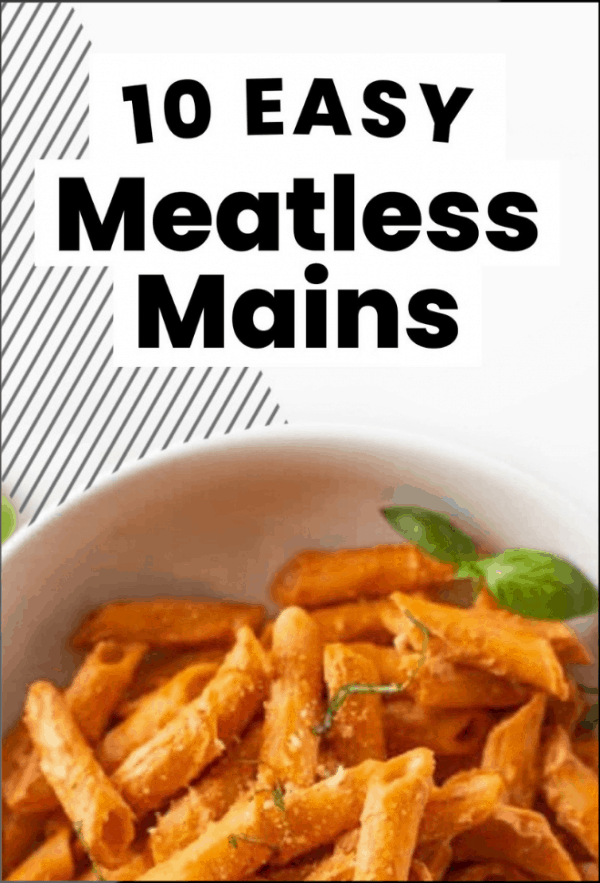

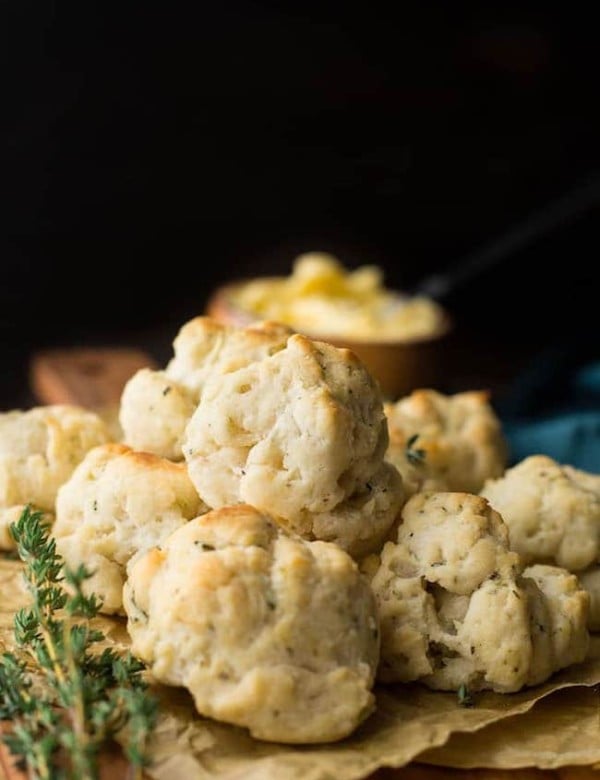
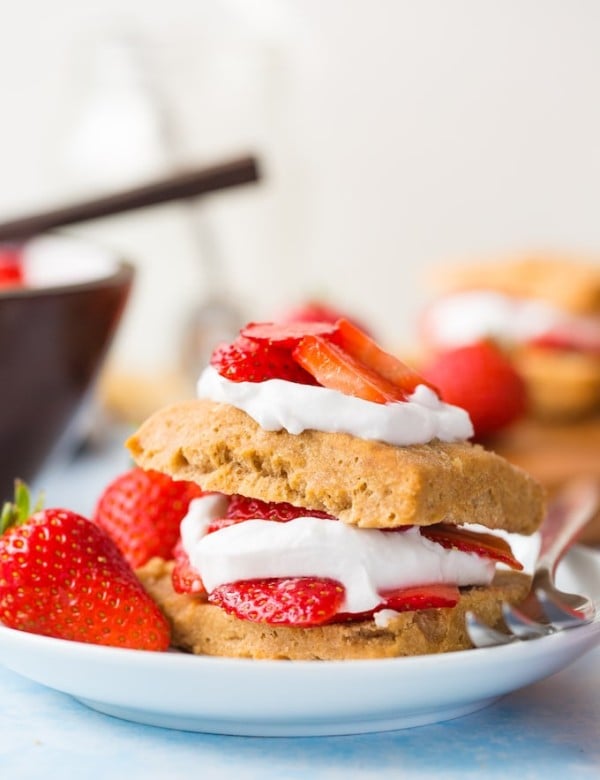
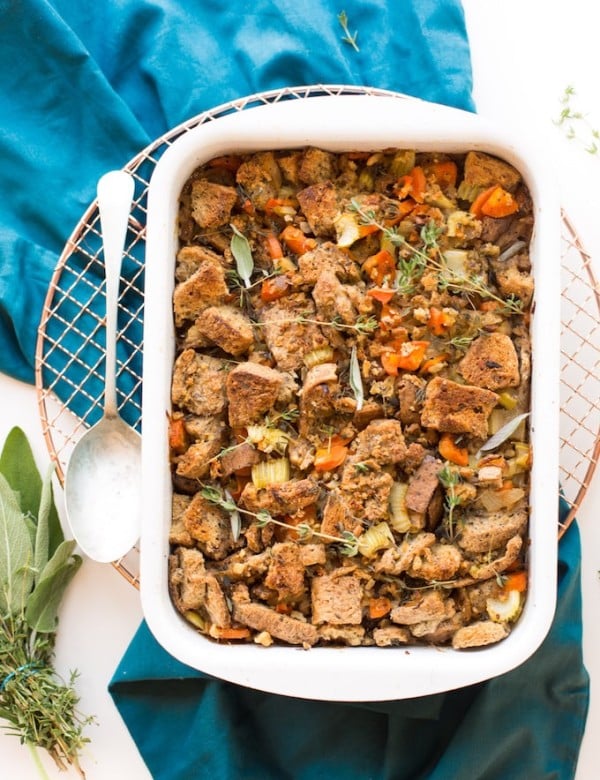
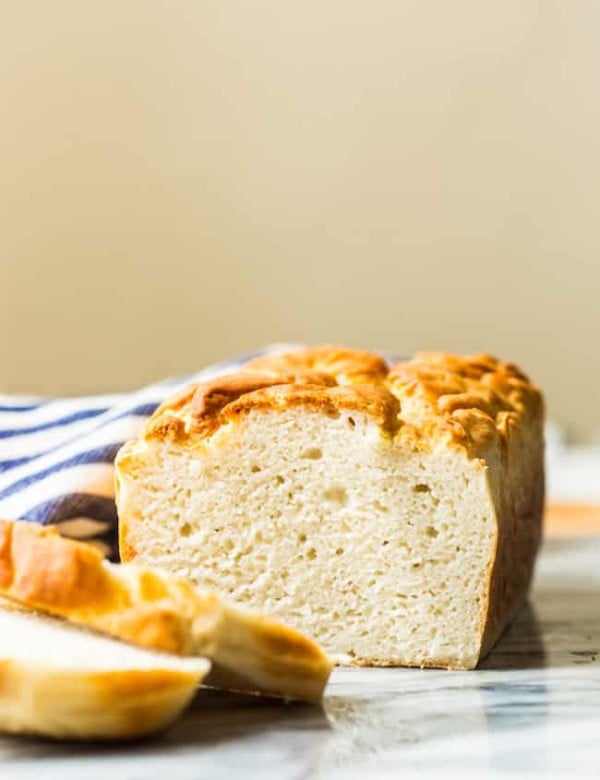
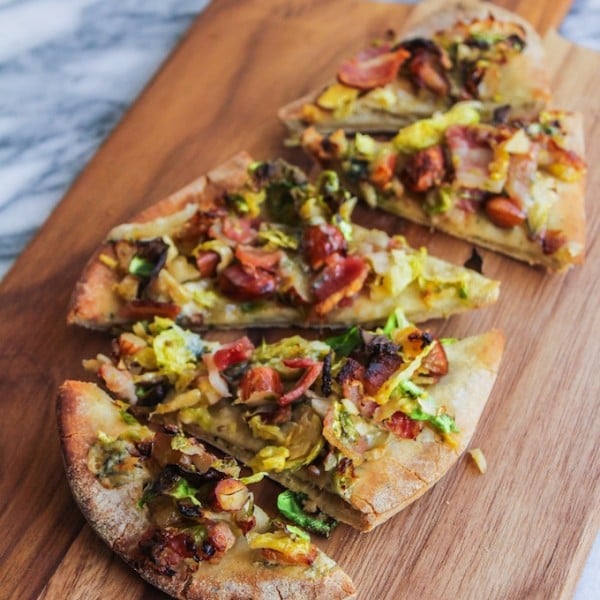
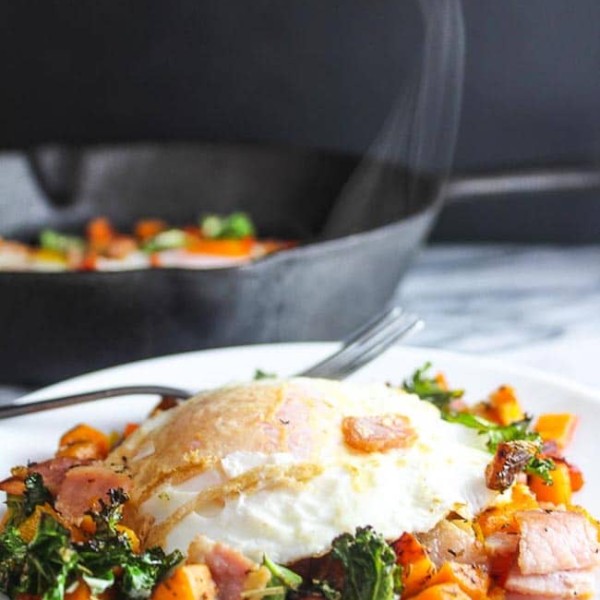
Samantha says
I am vegan so all my recipes are eggless though I find the texture to be dense.
Can I add in the Aquafaba to make the cakes/muffins light and fluffy even though the recipes does not require eggs?
Sarah says
Hi Samantha! I’ve found it’s best used as a binder or thickener – so things like meringue and mousse are perfect for it. That being said, I’ve seen a lot more people using it in muffins and cakes with a lot of success. You might be interested in this facebook group https://www.facebook.com/groups/372343816286624/ It says ‘Vegan Meringue’ in the title, but a lot of people post their aquafaba experiments and offer advice for cooking with it. Hope that helps!
Angie says
Aloha! This recipe looks delicious and is going to be my first time working with aquafaba. I’m so excited!! One question, the two cups of rice flour, what type of rice flour, brown or white? I’ll be making this bread soon and will post how it comes out. Mahalo for the recipe!
Sarah says
Hi Angie, thank you so much!
As for the rice flour you can use white or brown. The main difference between baking with brown is that it’s considered a whole grain so it has a better nutritional profile than white. It can however make baked goods a little heavier, but I don’t think there’s too much difference with this recipe. Good luck!
Binjal's VEG Kitchen says
looks so good interesting!
Brianna @Flippin' Delicious says
Apparently I need to get on the aquafaba bandwagon! I’m sharing it on Savoring Saturdays this weekend. Thank you for linking up!
Jessica says
This looks so good – I would never guess it’s gluten free. Way to problem solve 🙂
Sarah says
Thanks, Jessica! Desperate times call for a little bit of creativity 😉
Emily @ Recipes to Nourish says
This. Looks. So. Good. I’ll be featuring it tomorrow at Savoring Saturdays! Thanks for sharing it with us.
Sarah says
Thanks, Emily!
Raia says
I’ve totally been intrigued by aquafaba recently, too. And your bread looks delicious. 😉 Thank you so much for sharing it with us at Savoring Saturdays, Sarah! 🙂
Sarah says
You’ve got to try it, Raia! As far as egg substitutes go it’s one of my favorites
Marisa Franca @ All Our Way says
What an interesting recipe!! We make bread all the time and we collect recipes for different types. Thank you for helping to add to our collection. Your recipe sounds delicious.
Sarah says
Thanks, Marissa! You can never have too many bread recipes! I used to love baking bread before we had to go gluten free. It’s still fun, but it definitely poses a different kind of challenge
Rachel @ Simple Seasonal says
This sounds so good! I’m not vegan, but I’ve been meaning to try using a chickpea egg. I figure it’s more heart healthy than a chicken egg!
Sarah says
Thanks, Rachel!
Lisa @ Chocolate Meets Strawberry says
Wow, what a fantastic loaf! It looks absolutely delicious. I love the use of aquafaba here – awesome idea! I’ve only used it to make meringues so far, and it was AMAZING! I could barely believe what was happening before my eyes. Truly astounding, and I wish I had known about it back when I was vegan!
Sarah says
Thanks, Lisa! I’m excited thinking about all the possible things you could do with aquafaba. To think that you can use bean water to make something like meringue – it’s just so cool!